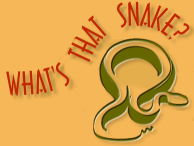Glossary
- Anal plate
Scale (sometimes two scales) that covers the anus, located on the under surface where the body joins the tail.
- Bird
An animal that has feathers and reproduces with hard-shelled eggs. Most but not all birds can fly.
- Camouflage
Colors and patterns that blend in with the surroundings, used to disguise or hide oneself.
- Carnivore
An animal or plant that consumes meat as its primary diet.
- Cloaca
Internal chamber into which the digestive, urinary and reproductive systems empty, opening to the outside through the anus.
- Constrictor
A snake that kills its prey by coiling around it and squeezing.
- Crepuscular
Active at twilight, either morning or evening.
- Diurnal
Active during the day.
- Dorsal
Referring to the upper surface of the animal.
- Endangered
There are over 100 species of animals that are close to disappearing from Ohio. Habitat destruction, pesticides, and pollution are the main causes.
- Habitat
A place where an organism lives. It must contain food, water, shelter, and a living space.
- Hibernation
A long-term, deep sleep during which the animal's heartbeat and respiration rates slow down considerably. Before going into hibernation, animals will store fat in their bodies to live off of until they awaken.
- Keeled
Refers to a scale with a raised ridge running down its midline.
- Lateral
Referring to one or both sides, between the upper and lower surfaces.
- Mammal
An animal that nourishes its young with milk produced by the female.
- Nocturnal
Active during the night.
- Predator
An animal that lives by capturing and eating other animals.
- Prey
An animal that is hunted or eaten by another animal.
- Rattle
A group of loosely attached horny segments at the end of the tail of a rattlesnake. When the snake vibrates its tail the parts of the rattle strike against one another producing a buzzing sound.
- Smooth
Refers to a scale that is smooth, without a raised ridge along its midline, hence not keeled.
- Venomous
Poisonous, referring to a snake or other animal that is capable of producing a noxious liquid, which, when injected into a victim, causes illness or death.
- Vertebrate
An animal that has a backbone, or spinal column.
